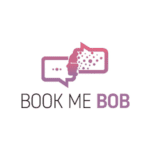
Have you thought about the next lodging downturn or are you just enjoying the good times? We know the lodging business is cyclical, so why are we always surprised when it is upon us? How many lodging downturns have you been through?
Personally, I have lost count.
We should be ready for the inevitable whether the downturn is caused by a catastrophic event or self-inflicted, by our insistence to keep building new products until our market is oversupplied. But we never are – we wait for the other shoe to drop, jump into reactive mode and make time-sensitive bad decisions with a short term perspective. Sound familiar?
Contingency Planning
Make contingency planning part of the annual budget process or the next step after your budget has been approved. Ask yourself what you would do if suddenly your business declined by 5%, 10%, 15%, etc. This will happen as the result of normal business cycles, the next great travel recession, you lose a major client and have a significant mix shift or new competition just opening at the start of the downturn. I can’t tell you how many times that happened to one of our hotels. This could also involve a catastrophic event such as terrorism, fire, hurricane, a public relations screw up and so forth.
We all know “stuff happens”. Plan for the “what if’s”.
Contingency planning must be a bottom-up approach. Each department is asked to develop department contingency plans focusing on staffing levels (management & hourly), guest services, amenities, pricing, what are we giving away that needs to be eliminated.
10 Questions to ask when planning for contingencies:
- How can we reduce our operating costs and maintain the same or similar operating margins?
- Should we just cut costs across the board or are there areas where we should continue to spend? Cutting costs across the board is the easy answer and is often detrimental in the long term.
- Do we really want to cut direct sales and advertising expenses when we need them the most?
- What service reductions will our customers understand?
- Do we continue to provide the extras to our loyal customers?
- Can we treat our loyalty segment differently?
- What concessions can we negotiate from our vendors?
- What opportunity/alternative markets could we solicit to fill the gaps?
- What is the right balance between prudent cost management and maintaining guest service levels that will pay long term dividends?
- What is our recovery plan? How do we phase back in services and staffing? Equally as important as the contingency plan.
Develop plans for the next travel recession in category levels akin to hurricane ratings, from level 1 to 5. Category 1 means shelter in place with minimal disruptions and Category 5 means full-scale evacuation. Depending on Department Head experience levels there may be a need for some coaching prior to beginning the exercise.
Implementing the Contingency Plan
Once the department plans are drafted for the travel recession and recovery, Department Heads then present their draft plans to the Executive Committee for review and approval. Consider having a joint staff meeting attended by all Department Heads so each department can get a sense of what are others are considering. Take advantage of cross-departmental learning.
The Executive Committee’s focus is on consistent approaches across all departments and the right mix of cost management and guest services. Targets should be set by departments for acceptable department margins and acceptable guest services scores. Recovery plans should have a similar focus. Department Heads then finalize their plans based on Executive Committee’s input. Don’t forget to address the Undistributed Expenses as these aren’t fixed costs – A&G, IT, S&M, HL&P, R&M – before you finalize your contingency plan.
Updating the Contingency Plan
Update your travel recession plan on an annual basis – once you go through the initial process you will only need to tweak your plan based on more current information. The key is to have a plan to effectively manage what you control regardless of market conditions and that includes everything down to the Gross Operating Profit line. Plan to manage the plan implementation through weekly or monthly reviews. Tweak the plan as necessary and set aside some budget to celebrate success.
Results of an Effective Travel Recession Plan
The end result of the bottoms up approach vs. a top-down mandate will be a master plan with total hotel buy-in. Because you have done advance travel recession planning and aren’t being reactionary, additional benefits include smoother execution, more effective results, less impact on customers and staff, less damage to brand/property integrity and a simpler and shorter recovery period.
All stakeholders will be pleased – your owners, your brand, your hotel team, and your customers. Everyone knows that “stuff happens” and your stakeholders will be thrilled that you handled things better than others.


















